We often talk about the customer experience in hospitality design, but is this conversation inclusive of a venue’s service staff? From an in-depth conversation in print to a real-life panel at FRONT – get an insight from the inside.
August 30th, 2018
“Right now, design has this obsession with sparseness, with trying to create spaces that are almost sterile. But there’s a point at which minimalism becomes jarring to comfort. Yes, it’s great to have a sleek space but you have to ask yourself if a customer is going to find it inviting. It also puts staff on edge. When everything is too fancy, you can’t relax and let your personality shine through,” states Andrew Joy.
Joy, along with Travis Howe and John Paul Twomey, recently took over Carlton Wine Room, a neighbourhood wine bar housed in a 19th century building with a historic bluestone cellar. He’s also an acclaimed front-of-house manager who has spent the last decade working at chef Andrew McConnell’s stable of restaurants. These venues — Cumulus Inc, Cumulus Up and Marion — are among Melbourne’s defining examples of hospitality. They combine a pared-back aesthetic and a warm, inviting, atmosphere that’s more interested in breaking down the barriers between staff members and diners than it is in slavishly following trends. Joy believes that a restaurant’s design features should make the dining experience as democratic and inclusive as possible.
“I love open kitchens – if you’re sitting at the marble bar at Cumulus Inc, you’re close enough to see a chef get burnt!” he laughs. “Sometimes, I’d tell my customer that the chef got married the other week and the guy, who may have worked a 60-hour week and was looking miserable would crack a smile. Encouraging customers to engage with staff on a personal level is part of the designed environment as well.”
For Joy, elements such as an island-style bar can foster these interactions between diners and bar staff, sparking the convivial spirit that can turn a one-off visit into a weekly event.
“Customers could walk around the bar at Marion, joke with us and become part of the working unit of the restaurant,” he says. “It’s all about the idea that you’re at my place and I’m taking care of you. There is no ‘us and them’. ”
Kate Christensen is the sommelier at celebrated Hobart restaurant, Franklin. Here, clean lines and polished concrete floors nod to the building’s former life as a Ford showroom while a 10-tonne Scotch Oven and open Scandinavian fireplace hint at a culinary philosophy that embraces chilly southern Tasmanian winters. Diners perch at a long bar that overlooks an open kitchen, where chef Analiese Gregory serves dishes like Bruny Island wallaby with sorrel and pickled mulberries. Christensen will spend service gliding between tables and topping up wine glasses, anticipating the desires of her guests.
“I never walk into any space without a purpose — it’s all about making the most out of every journey and never being empty-handed,” says Christensen, who previously worked at Melbourne eatery Coda and ultramodern Indian restaurant Tonka.
“Time is essential and it’s critical to be as efficient as you can with almost every step you take. At Tonka, [owner] Kate [Bartholomew] understood the position of waiter stations and the way staff would naturally move through the restaurant. You can see when a restaurant has been designed by a person who’s never worked in it. You take one step forward, then you find yourself stepping in another direction. There’s no fluidity.”
Christensen, who thinks negative space is an underrated design element, says that lighting and surfaces — essential to creating ambience — can inhibit her ability to do her job well.
“When I left Melbourne, it was very fashionable to have super dark restaurants,” she says. “My eyes are good but dim lighting strains them and makes it difficult to interact with the customer, who would sometimes get their phone flashlights out! And although I love the interior [effect], concrete floors can be tough. Hard floors take a toll on the people who spend time on them every day.”
For Joy, the design features that work best in a restaurant are those that actively create a hospitable experience — even if they seem small at first glance. “Hooks under the counter are such a beautiful touch, it’s considering the needs of guests in their utmost form,” he says.
“At Carlton Wine Room, we think about every detail — from the weight of the cutlery, to how glassware feels when you pick it up. We’ve also used softer tones, colours that comfort rather than challenge. As a restaurateur, I love the idea that someone feels at home in a space that I’ve created for them. Ego shouldn’t get in the way of your job, which is to take care of people.”
This article was written by Neha Kale and originally appeared in Indesign magazine #74 –the ‘Design Relish’ issue. It also was the inspiration for a seminar session, presented by Gaggenau, at FRONT, which included Andrew Joy and Kate Christensen on a panel with Caroline Clements and Kylie Javier Ashton.
INDESIGN is on instagram
Follow @indesignlive
A searchable and comprehensive guide for specifying leading products and their suppliers
Keep up to date with the latest and greatest from our industry BFF's!

A curated exhibition in Frederiksstaden captures the spirit of Australian design

It’s widely accepted that nature – the original, most accomplished design blueprint – cannot be improved upon. But the exclusive Crypton Leather range proves that it can undoubtedly be enhanced, augmented and extended, signalling a new era of limitless organic materiality.
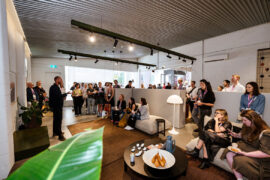
Melbourne is the destination and Saturday 6th September is the date – get ready for this year’s one-day design extravaganza with a full guide to what’s on.
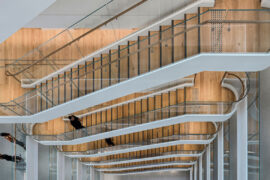
Brad Krauskopf, CEO & Founder of Hub Australia, tells us about Hassell’s design for Hub Australia Martin Place.
The internet never sleeps! Here's the stuff you might have missed
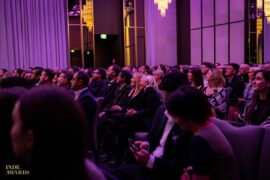
Thursday 31st July – the 2025 INDE.Awards Gala is set to go off at Saltbox, part of Sydney’s Wunderlich Lane precinct.
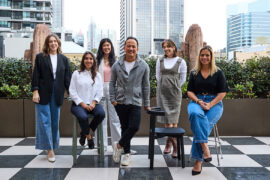
To mark a full year of Bradhly Le’s young studio, the team at RIZEN Atelier share their impressions and inspirations so far.
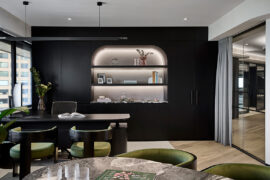
Setting the tone for McCormack’s HQ is Elton Group’s Eveneer WoodWall and Eveneer Raw in Ravenna – wrapping walls, ceilings and bespoke joinery in a dark, matte elegance. The seamless pairing delivers a cohesive, high-performance finish that anchors Studio 103’s luxurious, hotel-inspired workplace design.

For Aidan Mawhinney, the secret ingredient to Living Edge’s success “comes down to people, product and place.” As the brand celebrates a significant 25-year milestone, it’s that commitment to authentic, sustainable design – and the people behind it all – that continues to anchor its legacy.